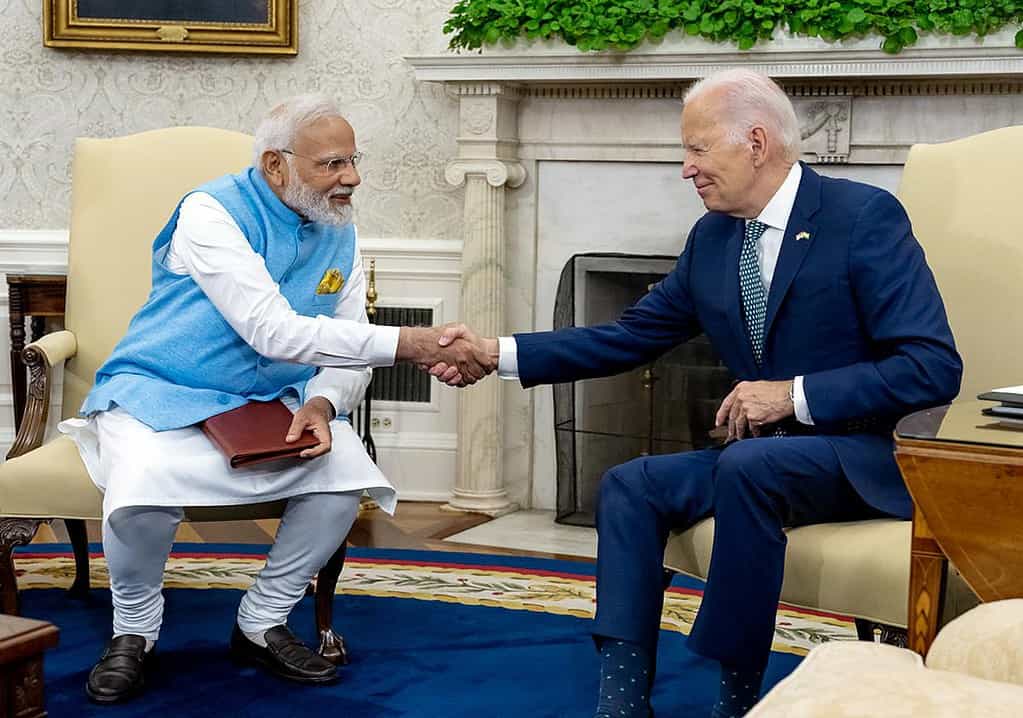New Delhi (Agency): In a momentous announcement, US President Joe Biden revealed that India and the United States are collaborating to send an Indian astronaut to the International Space Station (ISS) in 2024. The declaration came after a productive meeting between Biden and Indian Prime Minister Narendra Modi, highlighting the strengthening partnership between the two nations.
Addressing the media following their bilateral talks, President Biden emphasized the extensive cooperation between India and the US, spanning various domains of human endeavor. He stated, “From designing new ways to diagnosing and treating new illnesses like cancer and diabetes to collaboration on human space flight, including on sending an Indian astronaut to the International Space Station in 2024…”
In response, Prime Minister Modi expressed India’s commitment to space exploration and its decision to sign the Artemis Accords, a significant leap forward in the country’s space cooperation. Modi remarked, “We have decided to join the Artemis Accords. We have taken a giant leap in our space cooperation. In short, I would say even the sky is not the limit for cooperation with the US.”
The Artemis Accords, based on the Outer Space Treaty of 1967, serve as a set of guiding principles for civil space exploration in the 21st century. As an American-led initiative, its objective is to return humans to the moon by 2025 and pave the way for future space exploration, including missions to Mars and beyond.
India’s own ambitious space program includes the Gaganyaan project, aimed at sending its maiden human space flight into a low Earth orbit by the end of 2024 or early 2025. However, if successful, the Indian astronaut’s journey to the International Space Station could precede the Gaganyaan mission.
The collaboration between NASA and the Indian Space Research Organisation (ISRO) in developing a strategic framework for human spaceflight cooperation further underscores the shared commitment to advancing space exploration.
Beyond space-related endeavors, India and the US are also forging partnerships in other critical sectors. Collaboration in the field of semiconductors aims to build a diversified supply chain, with US companies investing significantly in India. Micron Technology, supported by the Indian National Semiconductor Mission, announced a substantial investment of over USD 800 million, contributing to the establishment of a USD 2.75 billion semiconductor assembly and test facility. Additionally, US-based Applied Materials is launching a semiconductor center for innovation in India, while Lamb Research is initiating a training program to enhance India’s semiconductor workforce.
The cooperation extends to mineral security, with the United States expressing support for India’s membership in the Mineral Security Partnership. This partnership, led by the US State Department, focuses on ensuring a stable supply of critical minerals essential for climate, economic, and technological objectives.
In the domains of advanced computing, artificial intelligence, and quantum information science, India and the US have established coordination mechanisms and signed implementation arrangements to promote collaboration between academia, industries, and governments. The focus is on leveraging the potential of these cutting-edge technologies for mutual benefit.
Furthermore, the two countries are working together on the development of 5G and 6G technologies, including Open Radio Access Network (RAN) systems. Partnerships and trials will be announced, and Indian participation in the US rip and replace program, aimed at eliminating untrusted telecommunications equipment, will be welcomed.
To strengthen people-to-people ties and higher education, a university network is being launched under the Indo-US Global Challenges to Federal Spark initiative. This network will foster research partnerships and exchanges in fields such as agriculture, energy, and health, harnessing the immense talent in STEM fields in both nations.
The collaborative efforts between India and the United States across diverse sectors signify a deepening relationship, driven by shared aspirations and mutual benefits. The joint endeavor to send an Indian astronaut to the International Space Station serves as a testament to the growing ambitions and technological prowess of India’s space program. With the sky no longer a limit, the partnership between these two nations holds the promise of even greater achievements on Earth and beyond.
